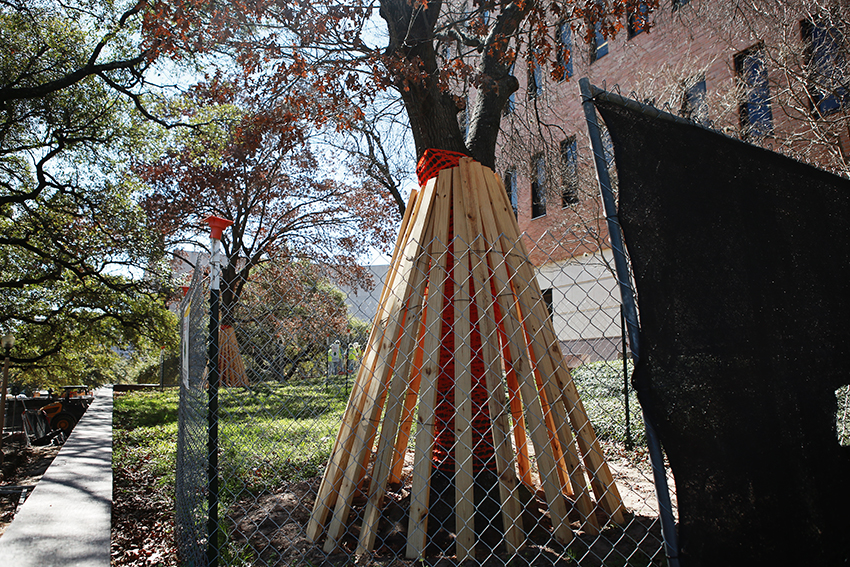While the bricks have been all the talk of the Speedway construction project, it’s the trees that need special attention.
The Speedway construction project involves new standards for maintaining the landscaping. When the initial plans for the Speedway project were drawn at the end of 2014, there were no formal tree or landscaping standards, according to Jim Carse, manager of UT landscape services. These standards now exist and are implemented in new construction projects.
“With any construction project, you’re going to have challenges,” Carse said. “Anything that falls within the roots of these trees has to be dealt with accordingly, based on best management practices.”
The newly established standards are particularly concerned with the care of root systems and their interaction with construction. The trees were initially assessed for their health and their proximity to fixtures which may be removed or demolished during the construction. As part of this process, landscape services went through a process they call root mapping, according to Carse. This involved probing the area around the trees with a fiberglass or metal probe to locate the roots of the trees. They would then estimate the size of the roots and hand-draw a map of the root systems. This map would allow those involved with the project to understand where the roots of mature trees may conflict with the installation of new utility lines.
One of the main concerns, according to Carse, comes from the addition of new light fixtures on Speedway. As the sidewalks are removed to convert the street into a pedestrian mall, new lights and utility poles are needed to provide students with adequate lighting when walking at night.
The maintenance of these root systems is crucial, especially in an urban landscape, Carse said.
“In our urban environment, we’re always so shy of proper soil and we usually don’t have enough for roots to grow as they would in a more rural or forested environment,” he said. “The most you can do for the root systems is probably the most important thing.”
Care for the trees is a feature of all stages of the project. According to Carse, this includes pruning, fertilizing, impact studies, soil sampling and analyzing the tools used in construction and their effect on the trees. Carse added that the specifications for care of the Speedway trees is much more extensive and detailed than anywhere else on campus.
In addition to the care of existing trees, new trees have also been planted on the site. These trees are meant to provide shade to Speedway mall while not compromising the existing tree canopy.
“We didn’t want to plant trees that are going to grow large under existing large trees,” Carse said. “We wanted to be as sustainable and efficient with the tree-planting as we could.”
While the issue of tree maintenance and landscaping may seem secondary to the main construction, it is actually at the core of the Speedway project, Carse said.
“Overall, the scope of the project was to create more green space and more landscape in the area,” he said.















